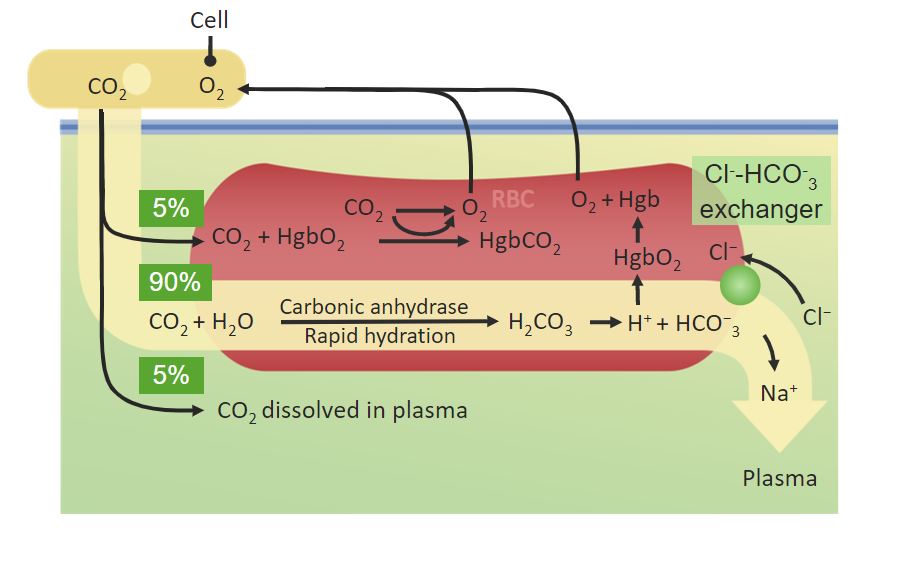Playlist
Show Playlist
Hide Playlist
Respiratory Cycle – Breathing and Lung Mechanics
-
Slides 01 PulmonaryVentilation RespiratorySystem.pdf
-
Download Lecture Overview
00:01 In this particular lecture, we’re going to cover ventilation. 00:05 And we have a number of learning goals to achieve. 00:08 And the first will be to describe what the respiratory cycle is. 00:13 The next will be to apply the various methods for us to understand ventilation and these two methods are minute ventilation and alveolar ventilation. 00:23 Then, we will also talk about the resistance to ventilation. 00:28 You will also understand how the work of breathing works and how compliance and surface tension affect work of breathing. 00:36 Finally, we will predict how lung diseases such as restrictive lung disease or an obstructive lung disease affect these various components of work of breathing. 00:47 Okay, let’s get right into ventilation. 00:51 To breathe, we have a specific respiratory cycle. 00:55 And we’re going to use pressure differentials to allow air to flow from outside the mouth into the air sacs or alveoli. 01:04 What is kind of interesting to think about is that you always start off with a negative or subatmospheric pleural pressure. 01:14 So pleural pressure in our example in this diagram is -5 cm of water. 01:20 So what this means is there’s always a negative pressure in a certain portion of the pleural space of your lungs. 01:27 And the reason for that is that the chest wall wants to expand and the lungs want to collapse and they are pulling on each other and that creates a subatmospheric or negative pressure. 01:40 In this case, it’s at 5. 01:44 When a person breathes in, negative pressure in the pleural space increases. 01:50 And what this will do or how this works is places like the diaphragm pull down. 01:56 And as you pull the diaphragm down, you stretch on the pleural membrane and create a greater negative pressure. 02:05 This then allows the lungs to expand and air to rush in. 02:12 So let’s take this now into more of a graphic format from kind of our cartoon. 02:19 When someone breathes in, you’re going to have an increase volume in the lung and that can be seen here as a volume increasing and then during exhalation, volume decreases. 02:35 Intrapleural pressure usually looks almost opposite of that. 02:40 As you breathe in, pleural pressure decreases. 02:44 And upon exhalation, it returns back to normal, but notice that it’s still negative. 02:52 It just becomes more negative during inspiration and less negative during exhalation. 03:00 How does this work for the pressure within the air sacs themselves? If you got from A to B, you see that there is, during inspiration, lower pressure within the alveoli. 03:14 This is very important because airflow only occurs via pressure differential. 03:21 So to get air into the air sacs, you need to have a lower pressure than what mouth pressure is. 03:28 And if you get a lower pressure, air will then want to travel in from outside the body, into that air sac. 03:36 During the midpoint of your inspiratory cycle, that is the lowest amount of pressure that you have within the alveolar space. 03:46 As you return to a resting position whereas denoted here as C, alveolar pressure will be back to 0. 03:54 When you try to get air out of the air sacs, pressure has to be positive compared to mouth pressure. 04:01 And positive pressure will create a differential from the alveolar sac to the mouth and air will flow out. 04:08 So it’s all about creating a pressure differential between the air sacs and atmospheric pressure or what’s outside the mouth. 04:17 If there’s a negative pressure in the air sac, volume will flow in. 04:23 If it’s a positive pressure, volume will flow out.
About the Lecture
The lecture Respiratory Cycle – Breathing and Lung Mechanics by Thad Wilson, PhD is from the course Respiratory Physiology.
Included Quiz Questions
Which of the following describes alveolar pressure during inspiration and expiration, respectively?
- Negative, positive
- Negative, negative
- Positive, positive
- Positive, negative
- Zero, negative
Which of the following changes take place during inspiration?
- Pleural pressure becomes more negative.
- Pleural pressure becomes less negative.
- The diaphragm is pulled upward.
- There is a decreased volume in the lung.
- The alveolar pressure becomes zero.
Customer reviews
5,0 of 5 stars
| 5 Stars |
|
1 |
| 4 Stars |
|
0 |
| 3 Stars |
|
0 |
| 2 Stars |
|
0 |
| 1 Star |
|
0 |
like it very much Thad is awesome donno why noone has rated it






